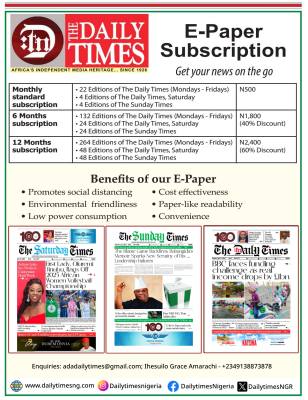Following the end of the recession, what next?

The news that the Nigerian economy had exited 5 quarters of recession came as a relief because the recession had dragged on for longer than most initially imagine. The question now is what next?
In a report presented at the Franco-Nigerian Chamber of Commerce in February, geopolitical analysis organisation, SBM Intelligence, had advised that the federal government (FG) pulls out its Economic Recovery & Growth Plan (EGRP) which was developed earlier this year and start the serious matter of implementation. SBM advised this not because they agreed with all that was written in it, but because the FG spent best part of two years putting it together and had no choice but to move forward with it.
The EGRP has three broad objectives of restoring growth, investing in our people, and building a globally competitive economy. It is the first and third objectives which include us at this point, as the second appears to have more of a political undertone.
How can growth be restored?
Make no mistake, Nigeria may be out of the recession but a growth rate of 0.55% can hardly be called growth. Any shock to the system can easily tip the economy back into negative growth.
The EGRP lists a few execution priorities for achieving these objectives:
- Stabilise the macroeconomic environment by aligning trade and fiscal policies, accelerating non-oil revenues, drastically cutting costs and privatising selected public enterprises and assets
- Achieving agriculture and food security
- Ensuring energy sufficiency
The priorities cannot be faulted and some progress has been made toward aligning trade and fiscal policies. Whilst Kemi Adeosun, the minister of finance, has repeatedly stated the need for reduced market interest rates to spur real sector lending, the CBN has taken a more measured approach to checking inflation and stabilising the exchange rate without full deregulation. No doubt the CBN’s intervention in the FX market was a key catalyst for the ongoing recovery. Unfortunately, the critical non-oil sector of the economy declined by 0.36%.
Nigeria’s low tax to GDP ratio is well documented, and only in the last few weeks has the FG communicated its strategy for addressing this anomaly. Even as we move to grow the non-oil sector, we must continue to develop our oil fields to ensure an increase in our OPEC production quota and invest in infrastructure for harnessing our massive gas resources.
Cost cutting is a necessity for the FG considering dwindling revenues. The bulk of revenues are used to service recurrent expenditure – including salaries for an over-bloated and under-performing civil service. Now that expenditure is likely to rise as various workers unions pile on the pressure for government to review their remuneration packages. In the last few weeks we have had various unions go on strike, and also threatening industrial action if its demand for review of the national minimum wage is not met is the umbrella body of workers – the Nigeria Labour Congress. Distractions seem to await this government at every corner.
Previous administrations realised the need to privatise some institutions but in many cases the processes has been truncated for two key reasons: a lack of transparency, and a failure to get the buy in of stakeholders. It does not appear that this administration has the political will to push for privatisation of contentious assets. While it broods, these assets will continue to languish in under-use.
The priority of agricultural sustainability is important because the present imbalance in food import has the highest drain on the country’s foreign reserve. The gains made on crops like rice and wheat have to be extended beyond these critical food crops to cash crops like cocoa and cashew.
Regarding the critical energy sector, the EGRP promises delivery of at least 10GW of operational capacity by 2020. This promise, if delivered, will have the greatest impact on Nigeria’s productivity. However, it is that for which Nigerians are most sceptical following similar promises and failures by successive governments. Having secured Chinese funding for projects like the Mambila Dam, an increase in generation capacity appears to be in sight. However, the ability to transmit whatever is generated in excess of current or future production is in doubt due to failure to invest in transmission – the one segment of the power value chain which the government retained for itself during the previous privatisation drive. Total privatisation and deregulation of electricity tariffs are critical next steps to attracting private investment and to realising real development in the sector. Again, this will cause some industrial unrest, and will need a lot of will to push through. The use of modular refineries and diversification of the energy sources are other initiatives that should be pursued.
How can we build a globally competitive economy?
- The initiatives listed by the EGRP for building the competitive economy include:
- Improving transportation infrastructure
Driving industrialisation focusing on small and medium scale enterprises
Nigeria has a huge transportation problem. The grand plan of the British colonialists was to amalgamate the Northern and Southern Nigeria colonies politically and economically. The latter was to be by trade, and the railways were to be the conduit of that trade. Today, the two economies remain miles apart almost as they were in 1914 and it is difficult to run away from the argument that Nigeria’s failed railways played a huge part in this failure to integrate. In the ashes of the railways have risen powerful middlemen who provide trucks to ship agricultural produce from the Northern farmlands to Southern cities, and finished goods from Southern ports to Northern cities. It will require significant political will from the FG to reverse this scenario and overcome the lobbying efforts of the power-brokers who themselves have become politicians and king-makers. It goes without saying that Nigeria also needs more robust road and airport networks.
The SME sector has been constrained by various issues the past few years – high interest rates making borrowing a tough feat even when the credit is available (most banks have chosen to invest their capital in high yield government debt), unavailability of FX to support importation of raw materials, slowing demand for goods from a populace living through a recession, multiple taxation, etc. This is one sector that theoretical strategies cannot solve its problems – they are just too numerous and too grave. Initiatives like single digit interest loans from the Bank of Industry can reach only a few businesses at a time. Many of these businesses do not pay taxes, so the option of easing taxes will not be far reaching. Perhaps the ministry of finance’s wish for reduced interest rates will have the most far reaching effect on this sector in the short term while improvement in electricity provision will be a needed boost in the medium term. Overall improvement in infrastructure, increased access to markets, income growth and consumer confidence are needed in the long term.
Conclusion
The EGRP does have its merits. Sadly, it appears the government spent its first two years strategising on how to govern, something it should have concluded in the few weeks between election day and 29th May, 2015. In middle of 2018 election season will be in full swing and the focus will again shift from governing to electioneering. One thing is clear: for Nigeria’s economy to achieve pre-2015 growth figures, decisive action must be taken in the various areas discussed above. As jobs always lag a few quarters behind GDP growth, this government may never get to achieve its second EGRP objective of empowering Nigeria’s idle workforce.








